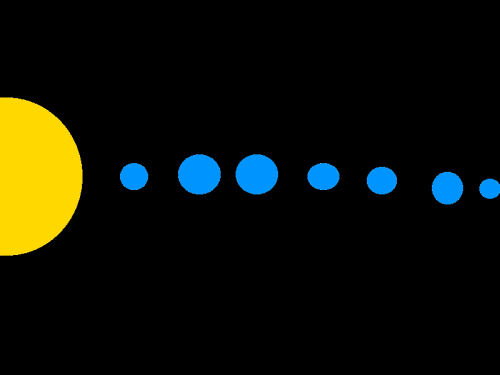Clia Solar System
The Clia Solar System is the system of five planets and two dwarf planets revolving around the star Clia. Two of these orbital bodies are hosts to sapient life; one of them being Pardisa — a designated intergalactic hub, and the second being Cailia — a smaller planet that has a relatively small population. The planets contained in this solar system — in order from closest to farthest from the star — are Otharus, Pardisa, Cailia, Thececury, and Lao Photh. The dwarf planets contained in this solar system are Kevis and Ibburn.
Orbital Bodies
All of the seven orbital bodies of the Clia Solar System are considered rocky bodies, meaning that they are primarily composed of solid materials. Carbon is an extremely common element in this solar system, but oxygen, silicon, iron, and calcium are also abundant. The atmospheres of the planets tend to be breathable by Humans, although two of the planets' atmospheres are far too thin to support Human life.
Clia1a — Otharus
Otharus is the closest orbital body of the Clia Solar System to its star. It is a hot and rocky planet with an extremely thin atmosphere made primarily of oxygen.
Clia1b — Pardisa
Pardisa is the second-closest orbital body to the star of the Clia Solar System. It is a planet with a mild temperature range and a breathable atmosphere. Pardisa is home to both sapient and non-sapient lifeforms. Its native sapient lifeforms are the Thinkers of Paradise. This planet is designated as Intergalactic Hub 07782.
Clia1c — Cailia
Cailia is the third-closest orbital body to the star of the Clia Solar System. It is a planet with a mild, yet cool temperature range and a breathable atmosphere. Cailia is home to both sapient and non-sapient lifeforms, although sapient life did not evolve naturally on this planet. This planet is designated as HH-000981364, meaning that it is an inhabited planet.
Clia1d — Thececury
Thececury is the fourth-closest orbital body to and fourth-farthest orbital body from the star of the Clia Solar System. It is a planet with a moderately cold temperature range and a breathable atmosphere. This planet is too cold to be host to Human life and is not home to any native sapient lifeforms. Despite this, there are some non-sapient lifeforms inhabiting the planet which are accustomed to the extreme cold.
Clia1e — Lao Photh
Lao Photh is third-farthest orbital body from the star of the Clia Solar System. It is a cold planet with a thin, hardly-breathable atmosphere. This planet does not support any forms of life.
Clia1f — Kevis
Kevis is the second-farthest orbital body from the star of the Clia Solar System. It is a dwarf planet that is not capable of being host to life quite yet.
Clia1g — Ibburn
Ibburn is the farthest orbital body from the star of the Clia Solar System. It is a dwarf planet that is not capable of being host to life quite yet.
Type
Solar System
Location under




Comments